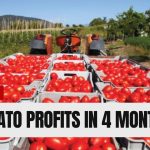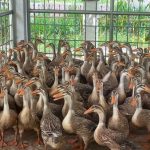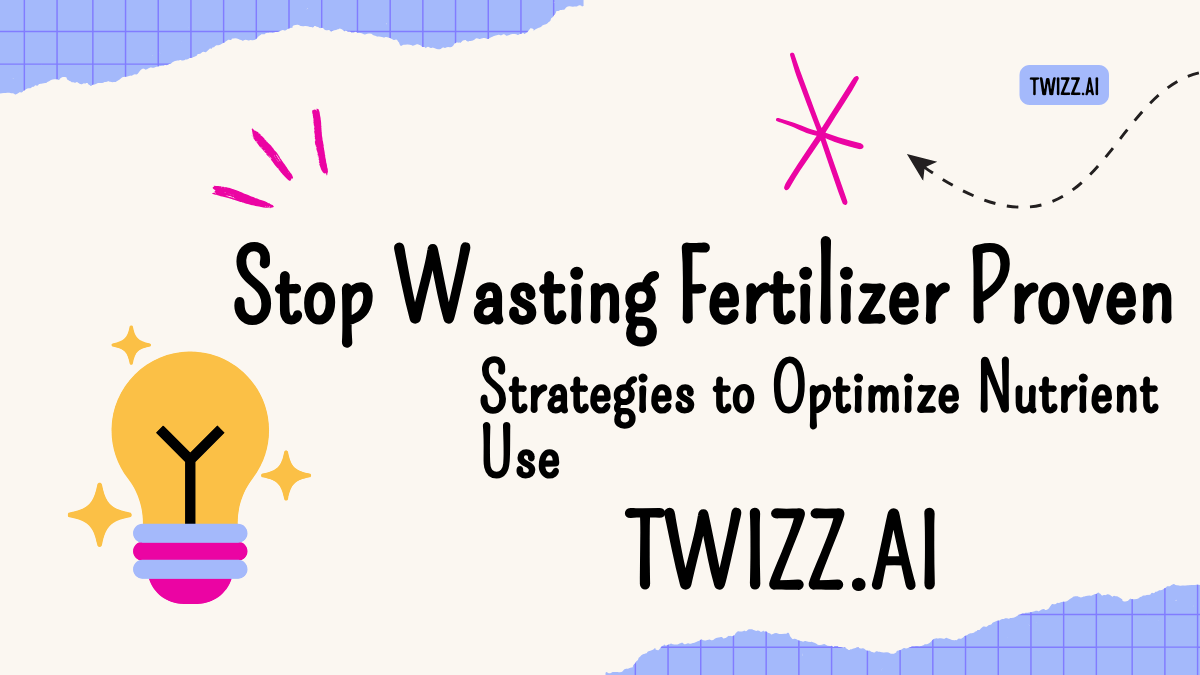Understanding Fertilizer Inefficiencies
Fertilizer overuse remains one of the most persistent challenges in modern agriculture and horticulture. Despite advancements in agronomic science, countless hectares of cropland still receive excessive amounts of nitrogen phosphorous and potassium compounds each season. This inefficiency drains resources from farmers and gardeners while polluting waterways and destabilizing ecosystems. Recognizing the root causes of waste sets the stage for transformative practices that conserve inputs and enhance yields.
Historical Context Of Excess Application
In the late twentieth century enthusiasm for high yield cultivars drove blanket fertilizer application across vast regions. Without proper soil tests or plant tissue analyses fertilizer recommendations often relied on generalized rules of thumb. Times of plenty obscured ecological costs as superficial greenness masked underlying nutrient imbalances. Narratives from pioneering agronomists reveal fields that appeared vibrant aboveground but suffered compaction depletion of micronutrients and microbial decline below surface.
Soil Health Versus Visual Greenness
Early agronomists documented how overfertilized soils lost structural integrity. Excess soluble salts inhibited beneficial bacteria and earthworms. Beneath the superficial verdure plants struggled to access bound phosphorus in compacted sublayers. Yields plateaued even as fertilizer rates increased illustrating diminishing returns. This tension between visible plant color and genuine soil vitality sparked a shift toward holistic nutrient management.
Role Of Microbial Populations
A crucial insight emerged from soil microbiology studies showing that diverse bacterial and fungal communities mobilize nutrients and support root systems. Overreliance on synthetic compounds diminishes microbial diversity. When beneficial organisms decline crops become more dependent on repeated fertilizer input creating a vicious cycle. Restoring microbial balance stands as a keystone in reducing waste and maximizing uptake.
Soil Testing And Diagnostics
Accurate diagnosis precedes effective treatment. Soil testing methods refine fertilizer recommendations to actual field needs. When growers replace guesswork with data driven protocols they rescue budgets and ecosystems simultaneously.
Laboratory Versus Home Test Kits
Professional laboratories offer comprehensive soil analysis including pH organic matter cation exchange capacity and trace element levels. These tests yield precise nutrient budgets calibrated to target crop demands. Conversely home kits provide quick readings of pH and basic macronutrient content. While less precise home kits serve as interim guides when budgets or logistics constrain lab access.
Frequency Of Testing
Experts advise soil testing at least every three years for perennial orchards and annually for intensive vegetable plots. Seasonal shifts in precipitation and crop rotation alter soil chemistry. Regular diagnostics identify emerging deficiencies before they escalate into yield dragging problems.
Interpreting Results And Tailoring Recipes
Reading a soil test report may overwhelm novices with jargon and numerical scales. Partnering with an agronomist or extension agent turns raw data into actionable nutrient recipes. Customized fertilizer mixes match target nitrogen phosphorus and potassium ratios while addressing localized micronutrient needs such as zinc boron or manganese.
Precision Application Techniques
Technological innovations empower growers to apply fertilizer only where and when plants require it. Precision practices minimize runoff volatilization and leaching while preserving valuable resources.
Variable Rate Technology Principles
Variable rate application systems integrate GPS yield data and field sensors to modulate fertilizer distribution dynamically. This approach combats field heterogeneity by delivering higher rates to nutrient depleted areas and reducing inputs where soil fertility proves adequate. Such spatial optimization can cut overall fertilizer usage by 15 to 25 percent without yield sacrifice.
Sensor Types And Integration
Optical sensors measure crop canopy reflectance indicating nitrogen status in real time. Soil moisture probes predict leaching risk under wet conditions guiding timing of applications. Combined with field mapping software these sensors orchestrate site specific fertilization plans updated throughout a growing season.
Equipment Calibration And Maintenance
Precision tools demand vigilant calibration. Flow meters and spreader settings require periodic verification against known reference materials. Poorly maintained nozzles or clogged injection lines lead to uneven distribution negating potential savings. Regular maintenance schedules ensure equipment matches prescription maps accurately.
Alternative Nutrient Sources
Reimagining fertilization beyond synthetic granules introduces organic amendments and biological stimulants that deliver nutrients more sustainably.
Compost And Manure Benefits
Compost from municipal green waste and well managed animal manure release nutrients gradually while bolstering soil organic matter. Enhanced water retention and aggregate stability reduce erosion and nutrient runoff. Integrating compost 5 to 10 percent by volume into topsoil can supply a significant portion of phosphorus and micronutrient needs.
Biofertilizers And Microbial Inoculants
Commercial preparations of nitrogen fixing bacteria phosphorus solubilizing fungi and plant growth promoting rhizobacteria represent cutting edge alternatives. When introduced into the rhizosphere these microbes mobilize native soil nutrients minimizing synthetic input volumes. Trials demonstrate up to 40 percent reduction in fertilizer use with maintained or improved yields in certain crops.
Seaweed Extracts And Humic Substances
Liquid extracts derived from brown seaweed offer plant hormones and fulvic acid complexes that enhance root growth and nutrient uptake efficiency. Humic substances chelate micronutrients improving availability at root surfaces. Foliar sprays at early vegetative stages jumpstart plant metabolism reducing overall fertility needs.
Water Management And Fertilizer Efficiency
Synchronizing fertilizer application with irrigation conserves both water and nutrients by curtailing deep percolation losses and surface runoff.
Drip Irrigation Coupled Fertigation
Injecting soluble nutrients into drip systems delivers precise doses directly to the root zone. This fertigation technique spreads small amounts of fertilizer across multiple irrigation events enhancing uptake rates and minimizing losses. Compared with broadcast application drip fertigation cuts fertilizer use by 20 to 30 percent.
Scheduling And Dosing Strategies
Daily or weekly low dose injections maintain a consistent nutrient supply matching plant uptake patterns. Avoiding large single doses reduces salt accumulation in the root zone and prevents shock. Automated controllers linked to flow sensors adapt injection volumes to seasonal growth stages and weather variability.
Preventing Salinity And Clogging
Maintaining injection lines demands attention to solution concentration and pH. Overly concentrated feeds risk crystallization and emitter blockage. Periodic acid or detergent flushes remove scale deposits preserving system longevity and uniform nutrient delivery.
Crop Rotation And Polyculture Advantages
Embracing diversity within cropping systems interrupts pest cycles enhances soil structure and regulates nutrient demands naturally.
Legume Integration For Nitrogen Fixation
Incorporating leguminous cover crops such as clover vetch or cowpea introduces atmospheric nitrogen into soil via symbiotic bacteria in root nodules. When plowed under these green manures supply subsequent cash crops with available nitrogen diminishing synthetic requirement by up to 50 percent.
Diversified Root Architectures
Mixing deep rooting species like alfalfa with shallow rooted grains spreads nutrient extraction vertically throughout the soil profile. Following deep feeders with shallow feeders balances nutrient removal and replenishment zones reducing localized depletion.
Temporal Stacking For Year Round Coverage
Sequential planting schedules maintain living roots in soil through winter reducing erosion and nutrient leaching. Cover crops scavenge residual nitrogen preventing it from washing into waterways. Integrating multiple species in a single cover crop cocktail compounds benefits by blending various functional traits.
Monitoring And Adaptive Management
Continuous observation and iterative adjustment underpin resilient nutrient management systems.
Remote Sensing And Drone Surveys
Unmanned aerial vehicles equipped with multispectral cameras detect nutrient deficiencies before they manifest visually. By overlaying imagery onto field maps growers pinpoint zones requiring supplemental fertilization rather than blanketing entire acreage.
Data Analytics And Decision Support
Harvest yields soil test histories and sensor logs feed into machine learning platforms producing predictive nutrient models. These intelligent systems recommend fertilizer timing and rates with increasing accuracy over successive seasons adapting to evolving environmental conditions.
Field Scouting And Ground Truthing
Despite technological allure hands on scouting remains indispensable. Walking fields to observe growth patterns pest damage and soil moisture ensures remote analytics stay grounded. Combining human observation with digital insight yields the most robust nutrient management strategies.
Economic Aspects And Risk Mitigation
Aligning fertilizer use with financial interests safeguards farm profitability while managing environmental liabilities.
Cost Benefit Analysis Of Reduced Input
Quantifying savings from lowered fertilizer purchases against any yield variations demonstrates economic viability. In many cases small yield adjustments yield greater profit margins due to steep fertilizer price volatility.
Insurance And Safety Net Programs
Participation in stewardship incentive schemes and crop insurance programs can offset initial investment in precision equipment or organic amendments. Subsidies often reward practices that reduce nutrient runoff protecting watersheds and public health.
Long Term Asset Appreciation
Healthier soils represent capital assets that appreciate over time. Increased organic matter improved structure and richer microbial life translate into sustained yield resilience amidst erratic weather patterns. These hidden assets amplify returns beyond immediate input cost savings.
Tips And Tricks To Optimize Use
Applying the lessons above requires fine tuning and creativity. The following tips consolidate best practices distilled from decades of field trials and on farm experiments.
Conduct Composite Soil Sampling
Gather soil cores from multiple points within each management zone then blend to form composite samples. This strategy smooths out microvariations revealing true average nutrient status.
Implement Split Application
Divide total fertilizer rates into multiple doses timed to crop growth stages. Early season low doses promote root establishment while mid season side dressing supports peak vegetative expansion.
Leverage Local Byproducts
Investigate nearby sources of organic waste such as brewery grains feather meal or paper mill sludge. Local byproducts often present cost effective nutrient sources while recycling waste streams.
Optimize pH With Lime Or Sulfur
Nutrient availability hinges on optimal pH ranges. Regularly adjust soil pH targeting the sweet spot for specific crops to ensure maximum uptake and minimal fixation of phosphorus or micronutrients.
Rotate High Demand And Low Demand Crops
Balance nitrogen hungry cereals with low demand species such as safflower or oilseed radish. This rotation smooths nutrient extraction pressure easing reliance on artificial fertilizers.
Scout After Rain Events
Heavy rainfall leaches nitrate quickly. Scout fields post storm to identify areas needing supplemental side dressing before yield loss sets in.
Calibrate Spreaders With Reference Trays
Use weight based calibration trays filled with known volume media to verify spreader output across speeds. Consistency in application ensures fertilizer goes where intended not wasted on headlands or roadways.
Integrate Mycorrhizal Fungi
Apply appropriate mycorrhizal inoculants at planting to form symbiotic relationships that enhance phosphorus foraging. This biological boost can reduce phosphate requirements by up to 30 percent in some crops.
Document And Iterate
Maintain detailed logs of application rates timings yields and weather. Review outcomes annually and refine strategies. Continuous learning accelerates mastery and drives innovation.
Conclusion
Embracing efficient fertilizer practices fortifies both farm profitability and environmental stewardship. By coupling data driven diagnostics precision technology organic amendments and adaptive management farmers and gardeners can slash waste dramatically. The result is resilient soils abundant yields and a healthier planet. Apply these principles and tips today the way forward lies in smarter use not mindless excess.










